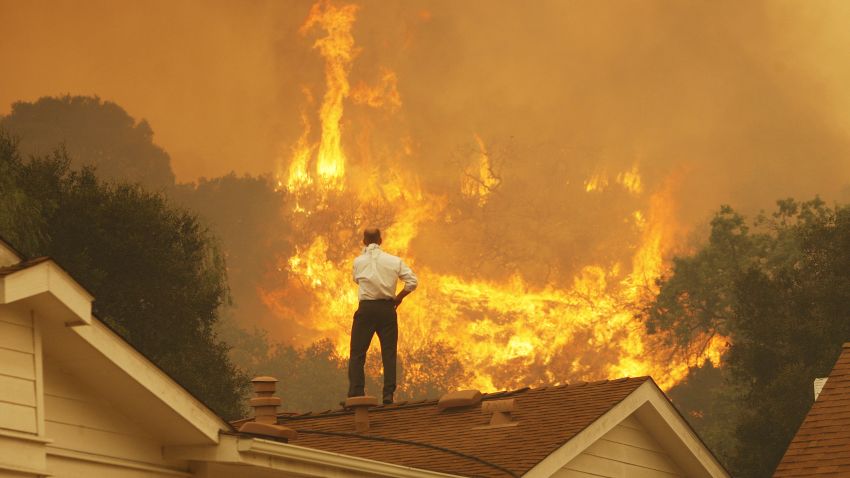Europe swung from unusually cold temperatures in the spring to its hottest summer on record last year, smashing temperature and daily rain records, while Mediterranean wildfires burned through land around the size of Cyprus.
They are the main findings of the fifth European State of the Climate report, published Friday, which found the summer of 2021 was 1 degree Celsius (1.8 degrees Fahrenheit) hotter than the 1991-2020 average.
The average air temperature in Europe has risen about 2 degrees Celsius above pre-industrial levels, according to the report.
The continent set a provisional, blistering new heat record last summer of 48.8 degrees Celsius on the Italian island of Sicily. Previously, the hottest day recorded in Europe was 48 degrees Celsius (118 degrees Fahrenheit) in 1977 in Athens, Greece, according to the report by the European Union’s Copernicus Climate Change Service.
In photos: Europe battles wildfires amid scorching heat waves
Parts of the Mediterranean were hit with an intense, weeks-long heat wave in July and August, with Italy, Turkey and Greece experiencing several destructive wildfires. More than 800,000 hectares were burned during those two months.
“With the changing climate, temperatures are getting warmer and warmer in the Mediterranean region, so it’s not unexpected to get these even higher temperatures,” said Freja Vamborg, a Copernicus senior scientist, who led and edited the report. “There is preconditioning due to climate change.”
She added that at the time, there were “blocking” weather patterns present, which is when areas of strong high pressure remain almost stagnant and block cooler, wetter weather from moving in.
These impacts are unsurprising, said Vamborg, considering the continued emissions of carbon dioxide (CO2) and methane, which are both generated primarily by the burning of fossil fuels.
The atmospheric concentration of methane – a potent greenhouse gas that has more than 80 times the warming power of CO2 in the short term – is picking up pace. It has increased at a faster rate over the past two years than it has over the last decade, the report shows.
Methane emissions come from a number of sources, including coal, oil and gas infrastructure, from which it can “leak” into the atmosphere throughout the supply chain.
“This continued increase in greenhouse gases is the main driver behind the global increase in temperatures,” Vamborg told reporters.
The report also noted that floods on July 14, which killed more than 230 people, came on a day of record rainfall in the mountains on the German-Belgian border. Heavy rains since the beginning of July had saturated the soil, leaving it unable to absorb more water. A study by the World Weather Attribution project found that climate change had made those floods up to nine times more likely to happen.
In pictures: Deadly flooding in western Europe
The persistent rain came from a low-pressure weather system that carried moisture from an unusually warm Baltic sea, which experienced temperatures at around 5 degrees Celsius higher than average last year.
At the time, CNN meteorologists reported that the area had experienced a whole month’s worth of rain in a single day.
The report also noted unusually low wind speeds in northwestern and central Europe, including some countries that experienced their lowest wind speeds since 1979. That led to lower than expected power generation from wind turbines, the report said, noting a deeper understanding or Europe’s wind variability was needed to help effectively design the continent’s energy transition.
The climate crisis is fueling extreme weather around the world. The summer of 2021 was also the hottest on record in the US, according to the National Oceanic and Atmospheric Administration, tied with the country’s “Dust Bowl” summer of 1936. Canada experienced its highest-ever temperature of 49.6 degrees C (121.3 degrees F) last summer and multiple wildfires. Hundreds of people died in the heatwave and fires. The western US states also experienced heatwaves and deadly fires.
CNN’s Angela Dewan contributed to this report.








































































